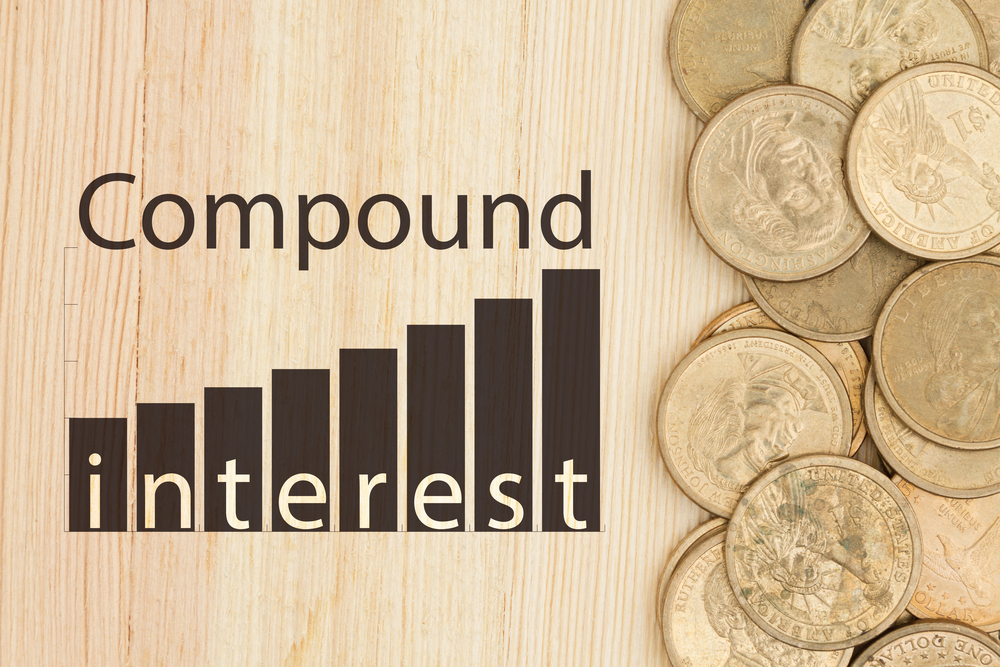When it comes to building wealth, there’s one principle that stands out above all the rest—compound interest. You’ve probably heard about it in passing, maybe in a high school class or on a finance podcast. It might sound technical or boring, but it’s actually one of the most powerful forces in personal finance. In fact, Albert Einstein is famously (and perhaps apocryphally) quoted as saying, “Compound interest is the eighth wonder of the world.”
Whether you’re a student with your first savings account or a young professional beginning to invest, understanding how compounding works—and why time is its best ally—can completely transform the way you think about money.
Che cos'è davvero l'interesse composto?
Let’s start with a basic explanation. Compound interest is the process where your money earns interest, and then that interest starts earning interest too. It’s growth on top of growth.
Imagine you invest € 1,000 and it earns 7% a year. After one year, you have € 1,070. But instead of withdrawing that extra € 70, you leave it invested. In year two, you earn 7% not just on your original € 1,000, but on € 1,070 — giving you € 1,144.90. That extra € 4.90? It’s interest earned on your interest. That’s compounding in action.
Immaginate di farlo per 30 o 40 anni.
Perché il tempo conta più della quantità
Una delle verità più trascurate riguardo all'interesse composto è che quando l'inizio conta molto di più di quanto quanto con cui si inizia. Considerate questo esempio:
- Emma invests € 200/month starting at age 25 and stops at 35 (only 10 years of investing). Her money stays invested until retirement at 65.
- Luca waits until he’s 35 to start and contributes € 200/month all the way until 65 (30 years of investing).
Con un rendimento medio annuo di 7%:
- Emma’s total contributions: € 24,000 → Final value at 65: € 226,000+
- Luca’s total contributions: € 72,000 → Final value at 65: € 227,000+
Incredible, right? Emma invested a third of what Luca did, but ended up with nearly the same outcome—simply because she gave compound interest more time to work.
That’s why starting early, even with small amounts, is critical. Waiting to invest is like giving away years of growth potential.
The Numbers Don’t Lie
Let’s look at a few quick illustrations of compounding with a 7% annual return:
- € 1,000 invested for 10 years → € 1,967
- € 1,000 invested for 20 years → € 3,870
- € 1,000 invested for 30 years → € 7,612
- € 1,000 invested for 40 years → € 14,974
Notate qualcosa? Solo negli ultimi 10 anni (dal 30° al 40° anno), il vostro denaro ha più che doppi. That’s the magic of exponential growth—returns accelerate the longer you wait.
Dove si può sfruttare l'interesse composto?
Per la maggior parte degli investitori al dettaglio, l'interesse composto avviene attraverso investimenti a lungo termine come:
- ETF del mercato azionario (ad esempio, MSCI World, S&P 500)
- Piani di reinvestimento dei dividendi
- Conti di risparmio fruttiferi o titoli di Stato
- Conti di pensionamento come fondi pensione o piani di investimento personali
The key is to reinvest your returns rather than withdrawing them. Many investment platforms allow automatic reinvestment of dividends or interests—meaning you stay on track without lifting a finger.
In Italia, opzioni come i PAC (piani di accumulo) o l'investimento mensile in portafogli basati su ETF (attraverso Fineco, Moneyfarm o Trade Republic) rendono la capitalizzazione accessibile e automatica, anche per i piccoli investitori.
Lasciate che sia il tempo a fare la parte del leone
Compounding doesn’t require genius, luck, or market timing. It rewards consistency and patience. It’s what turns € 50 a month into € 100,000+ over a lifetime. It’s how average earners can become wealthy without needing to take wild risks.
The earlier you start, the more forgiving the process is. You don’t need to be perfect. You just need to be nel gioco.
So if you’ve been putting off investing because it feels complicated, intimidating, or like something for “rich” people—stop. Start with € 10, € 50, whatever you can. The point isn’t how much. The point is a partire da ora and staying invested. Let your future self thank you. Because when it comes to compound interest, time isn’t just money—it’s power.

